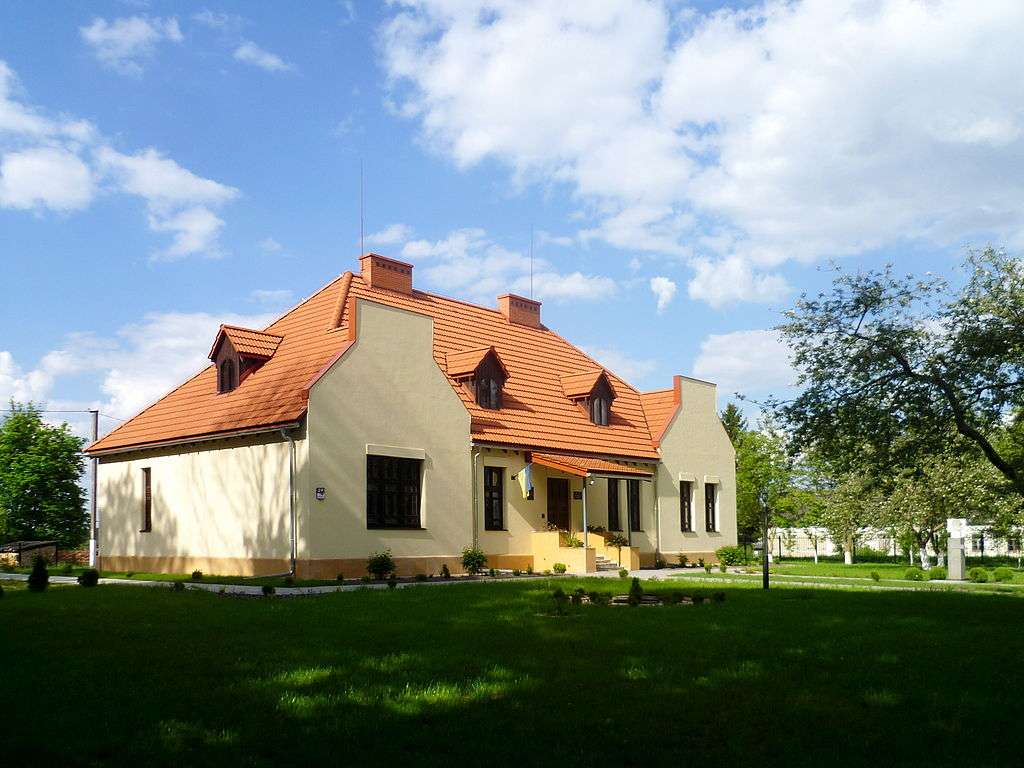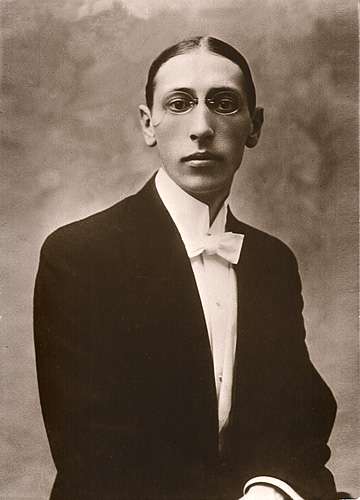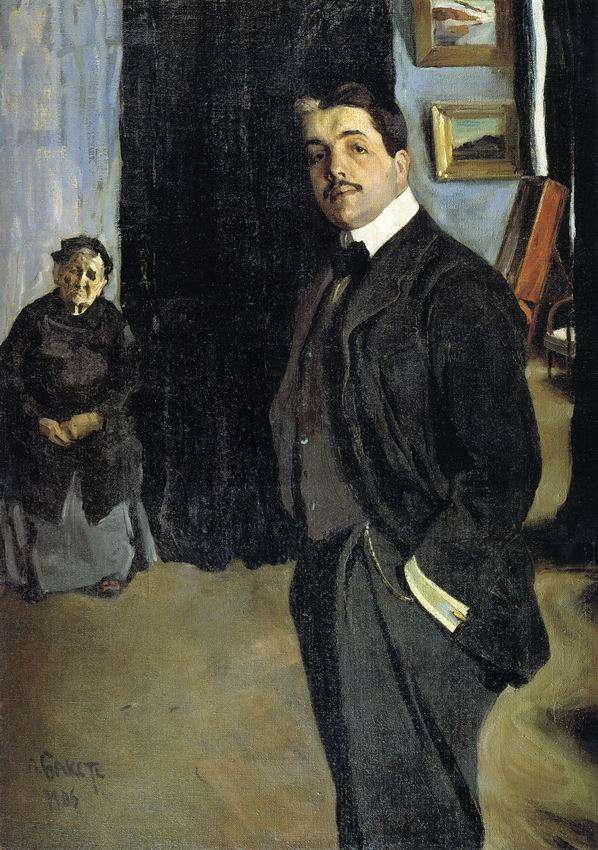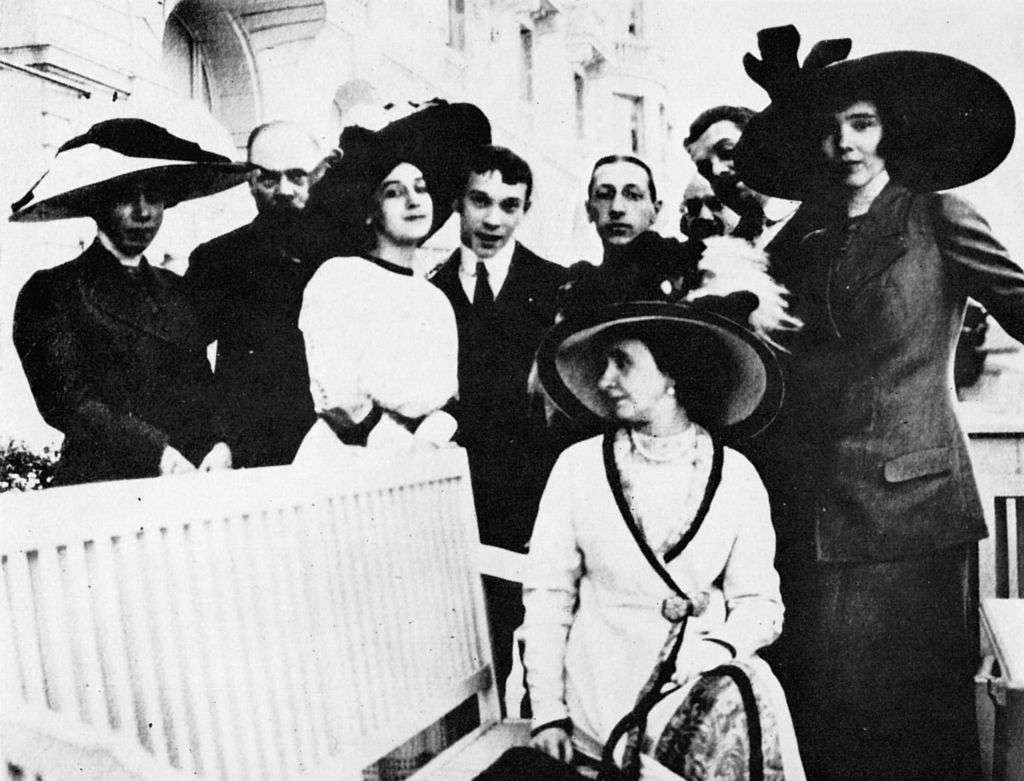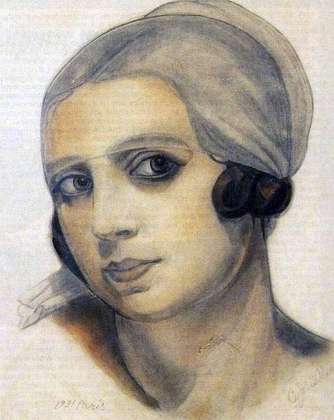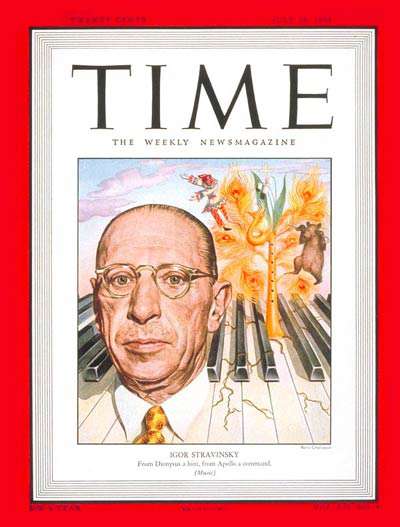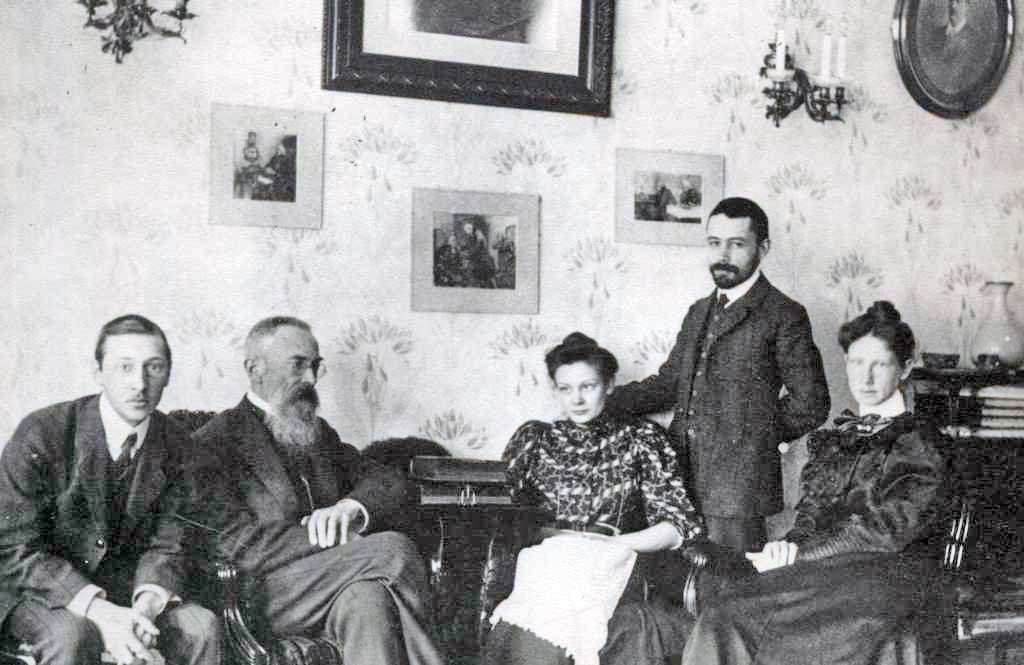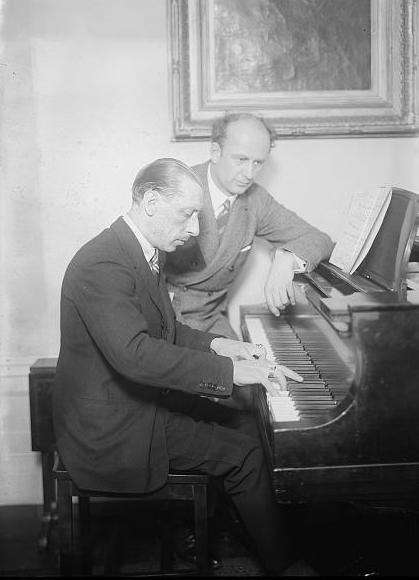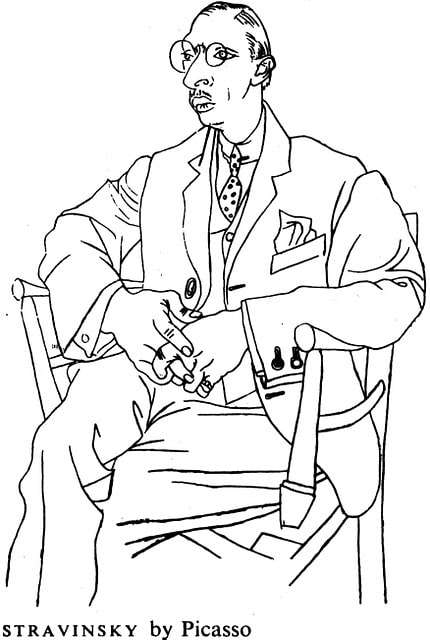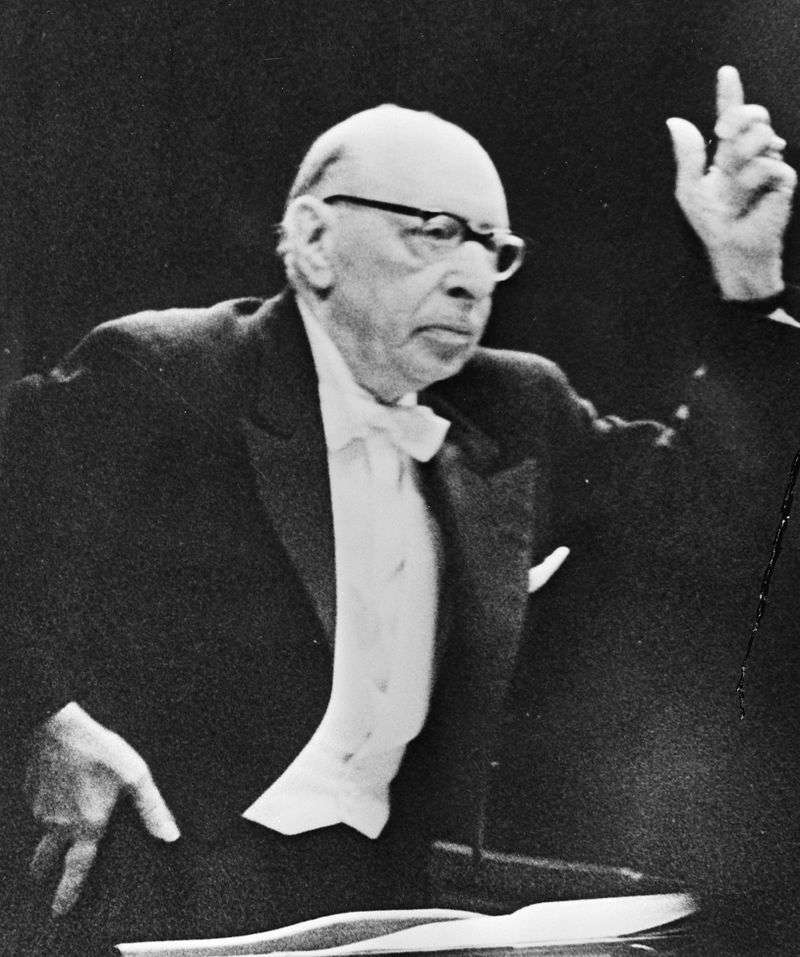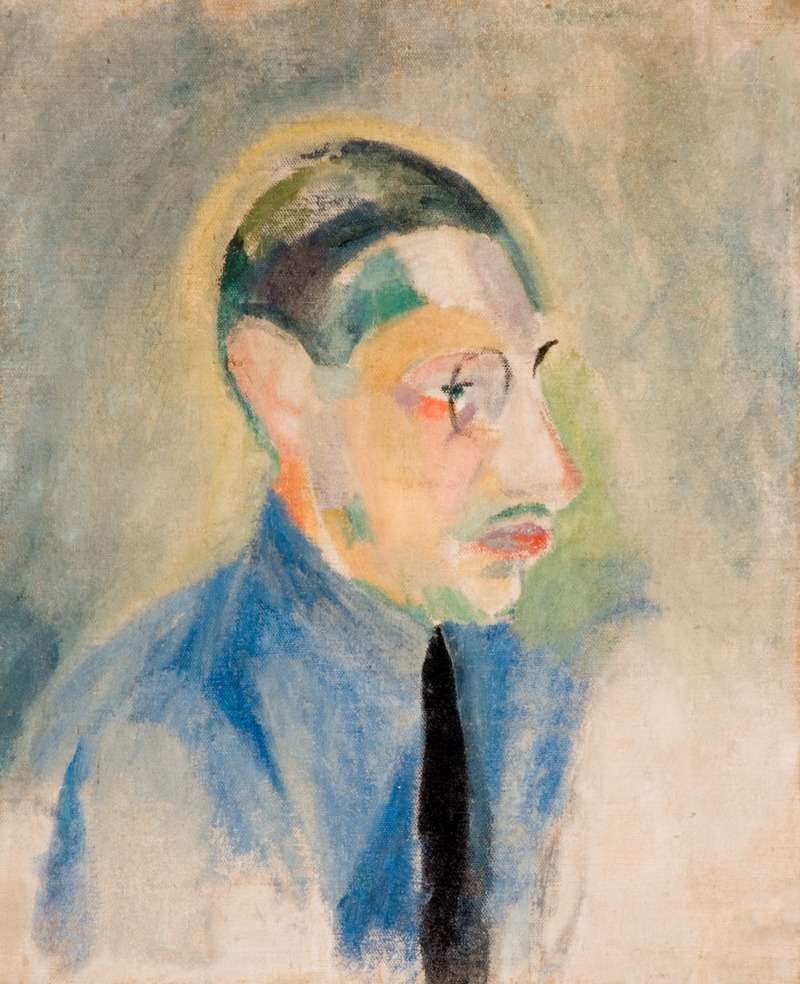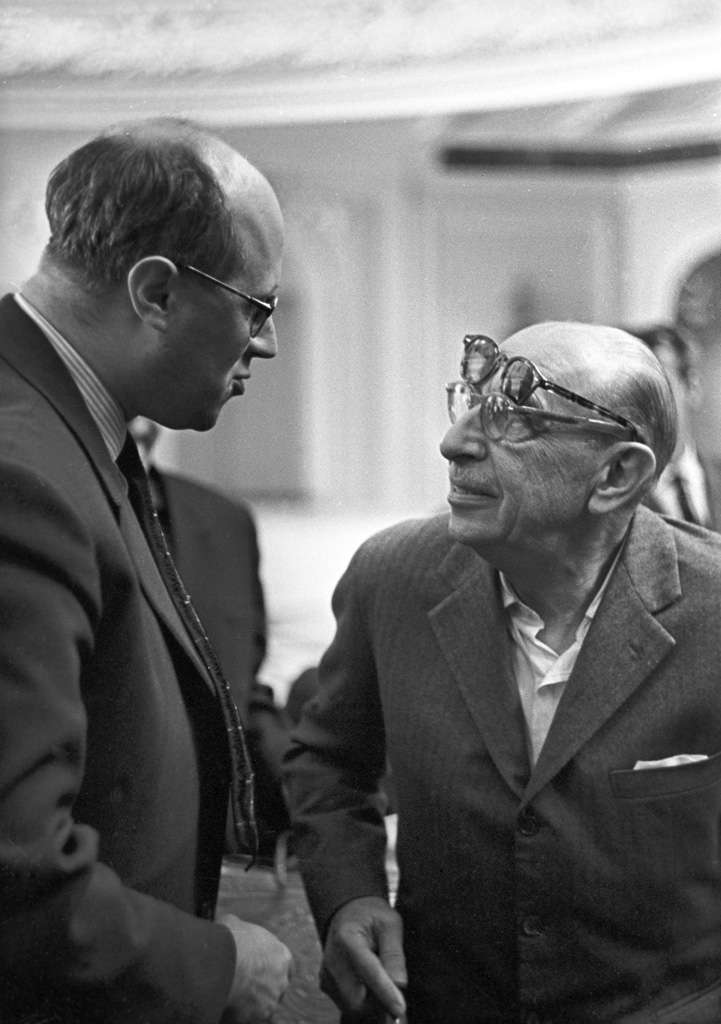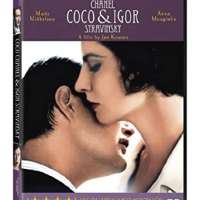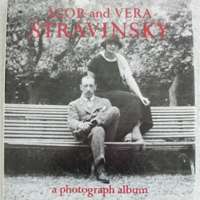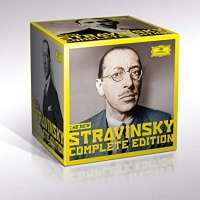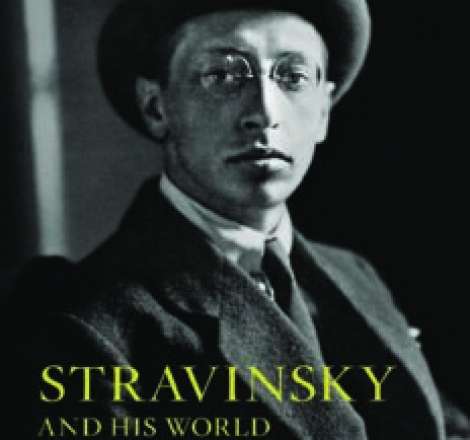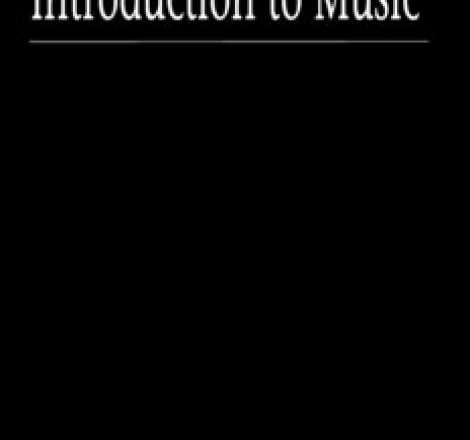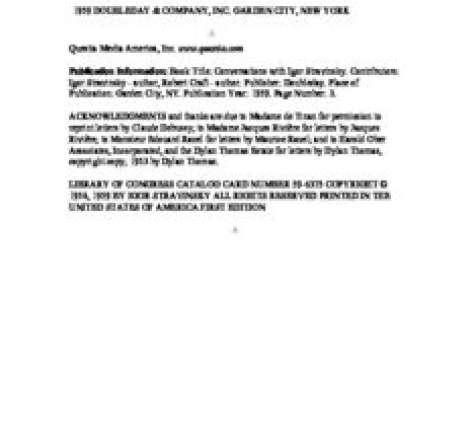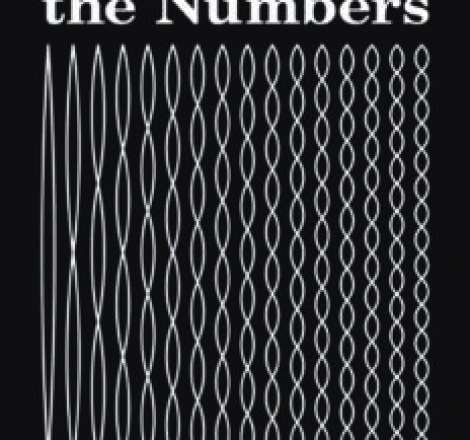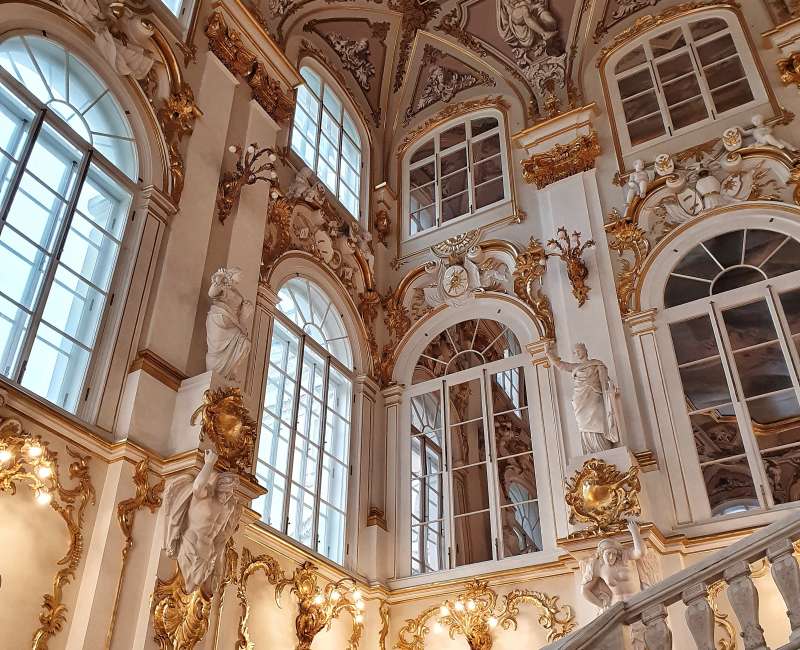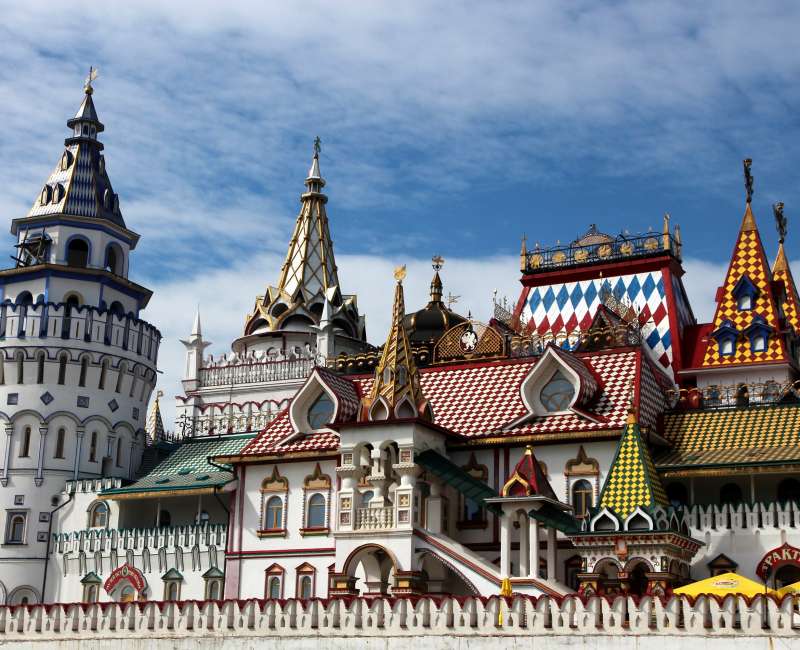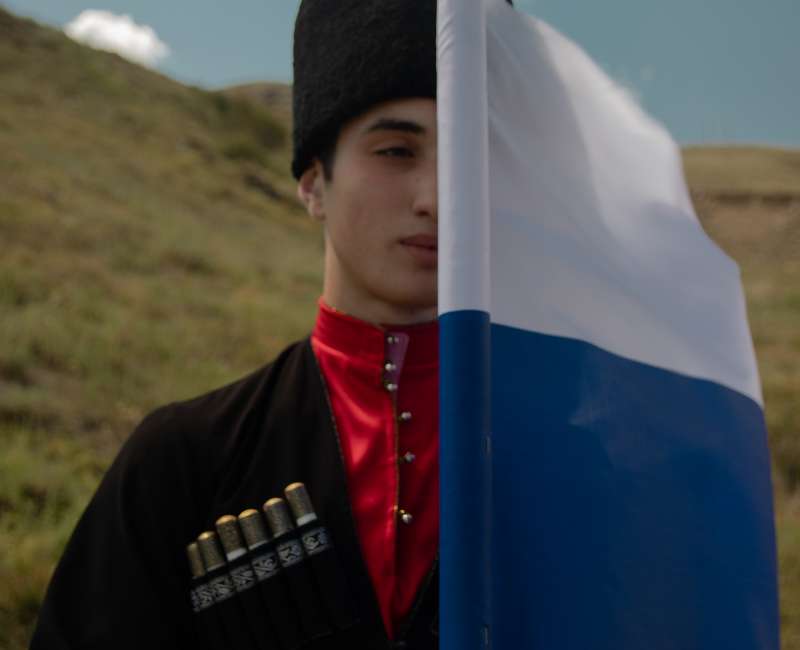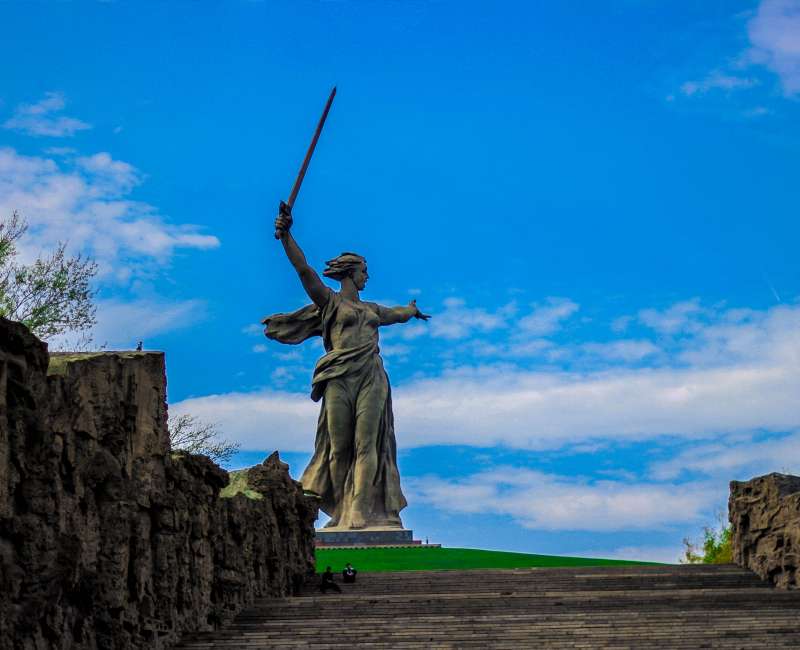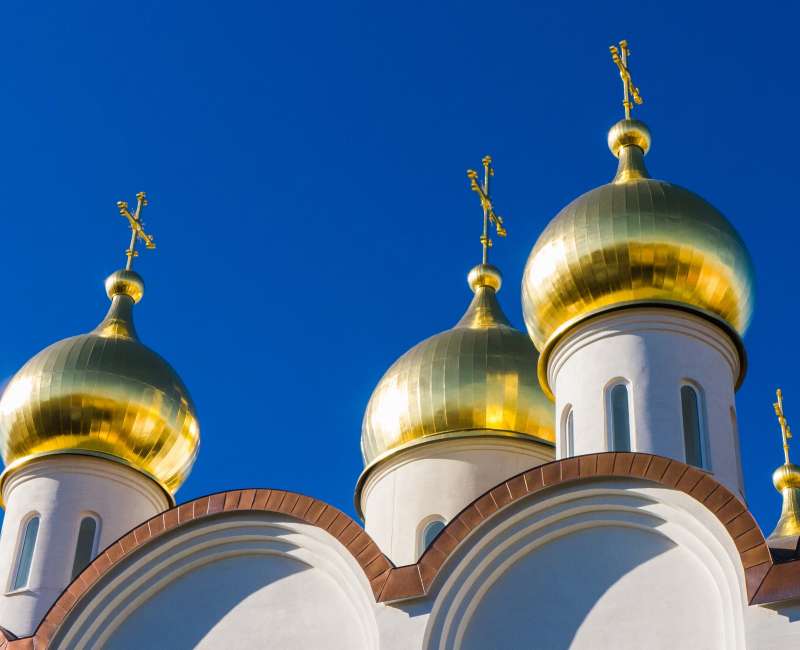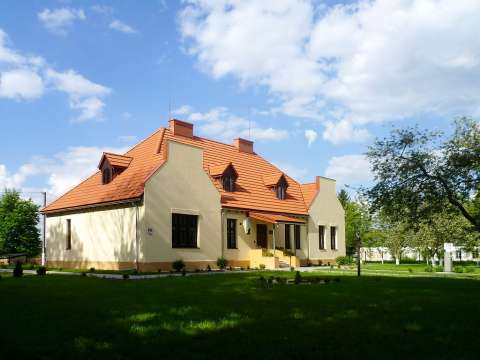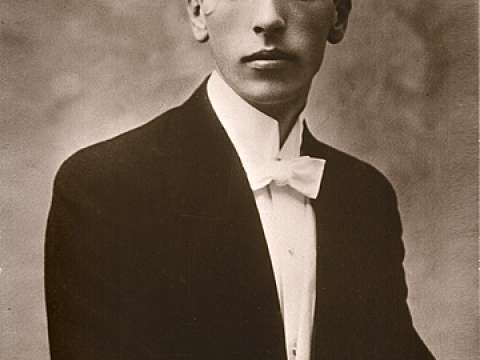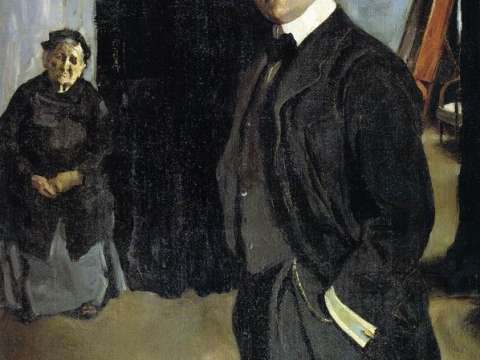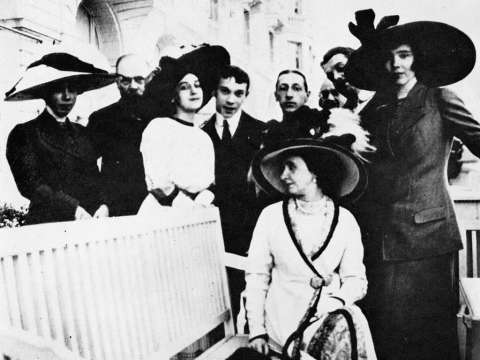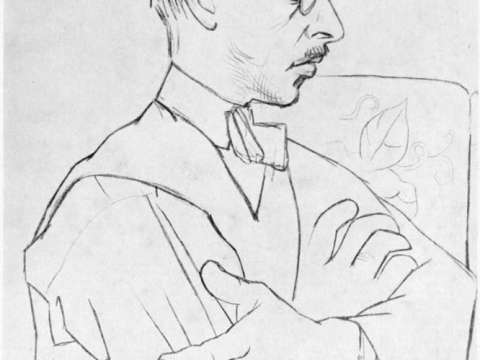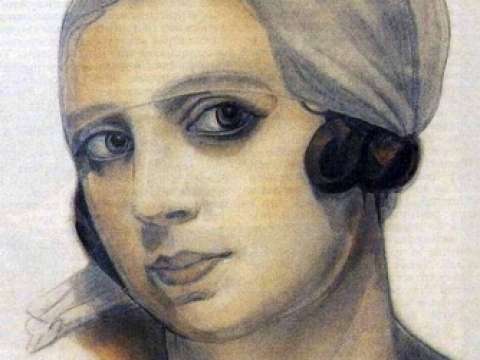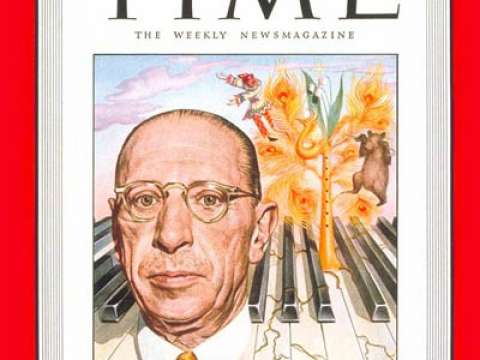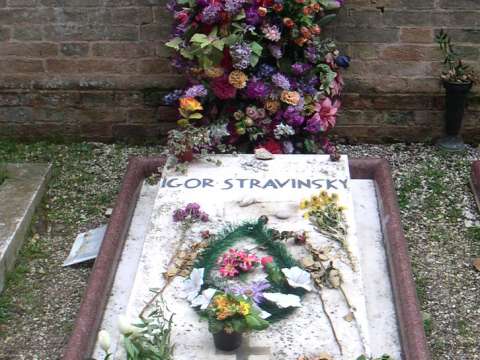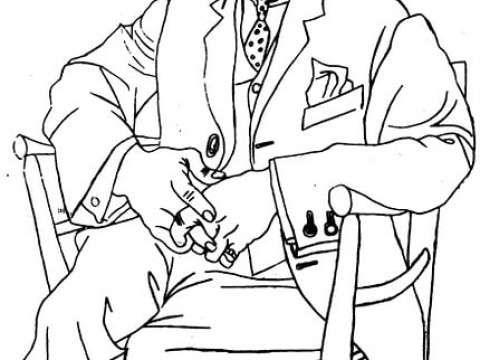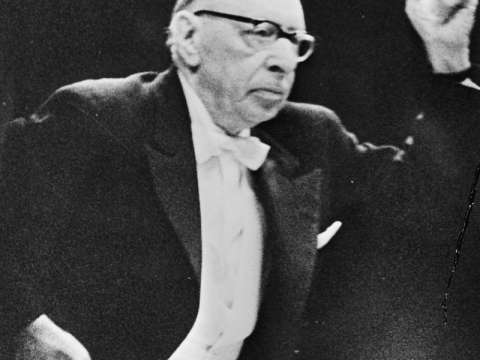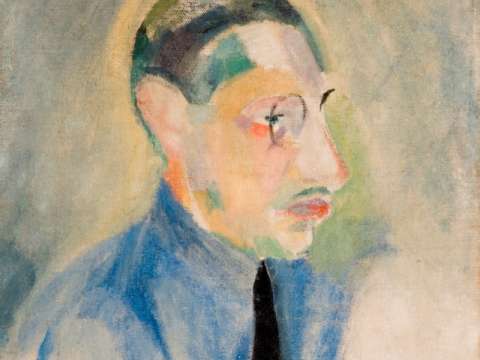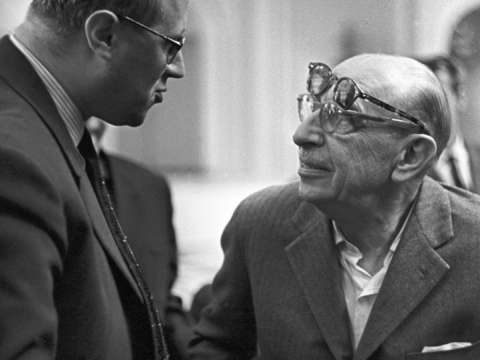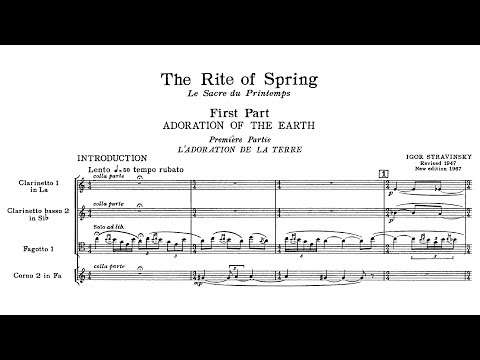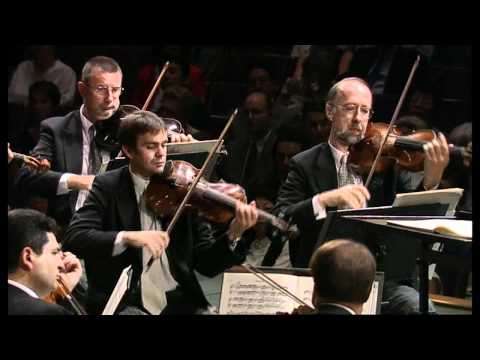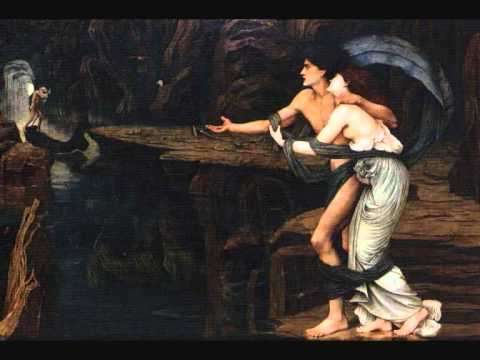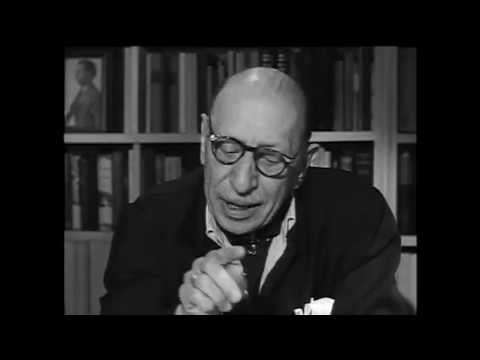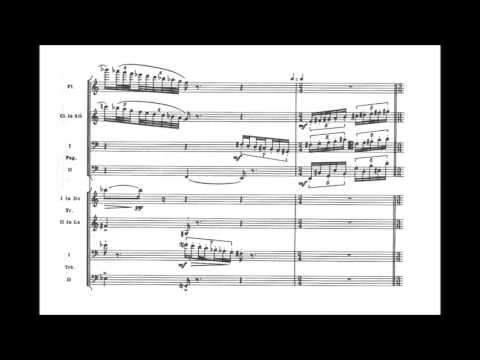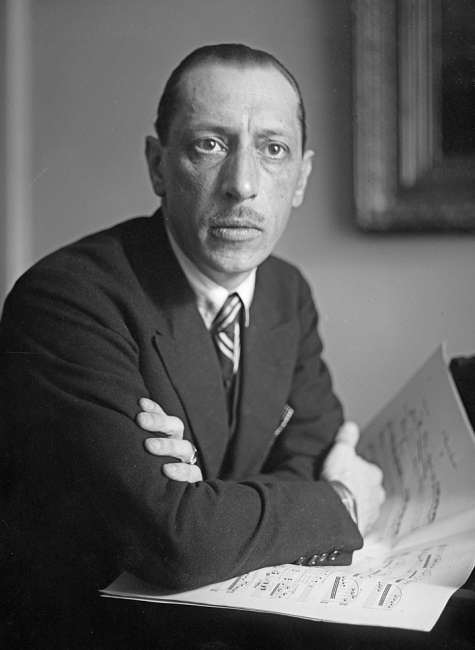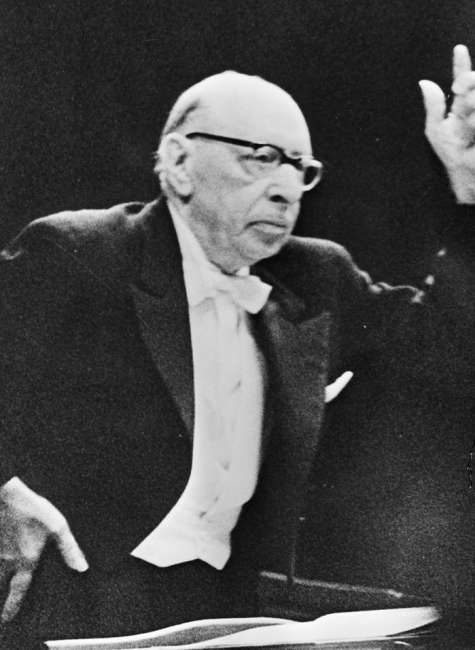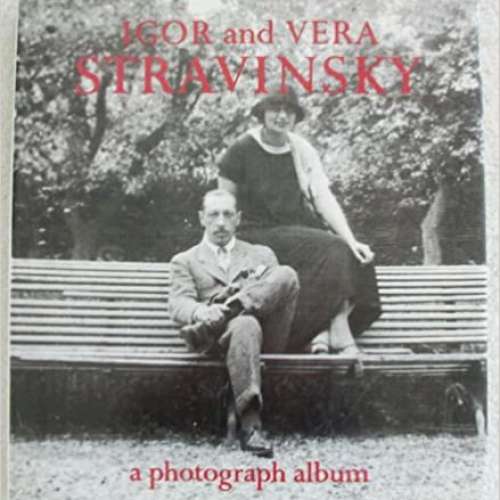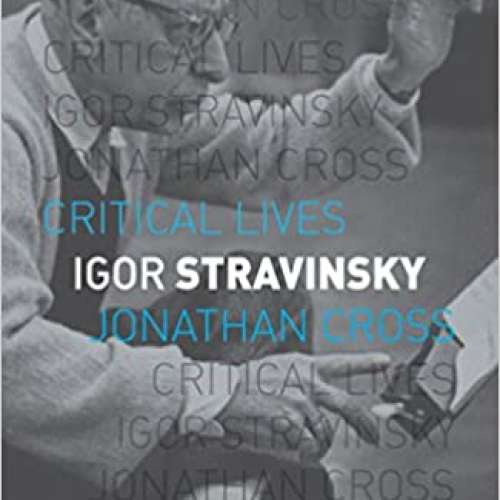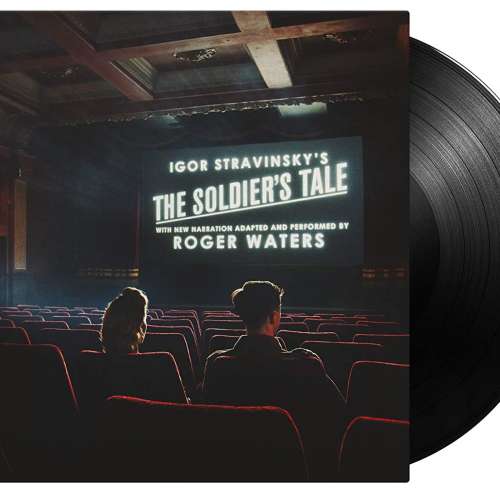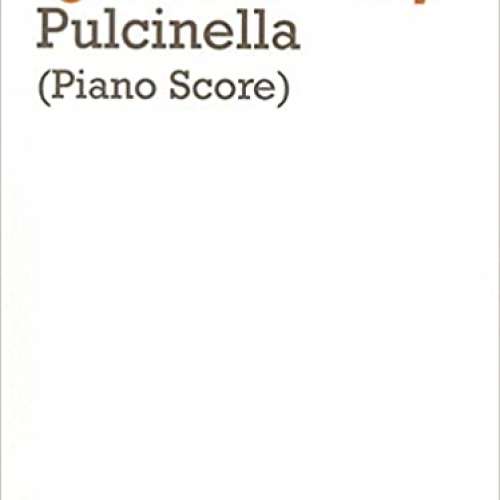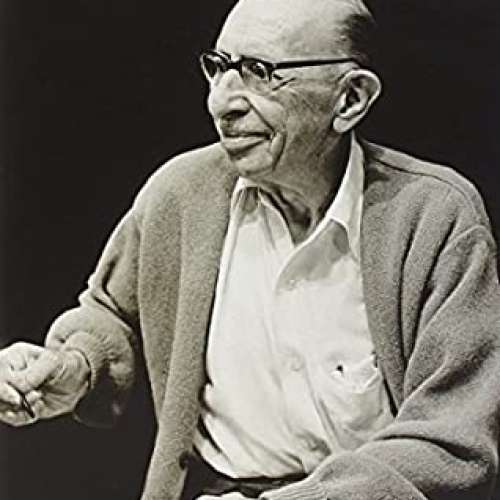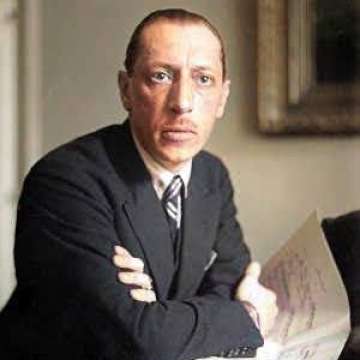

Igor Stravinsky (1882-1971)

I haven't understood a bar of music in my life, but I have felt it.
Igor Fyodorovich Stravinsky was a Russian-born composer, pianist, and conductor. He is widely considered one of the most important and influential composers of the 20th century.
Stravinsky's compositional career was notable for its stylistic diversity. He first achieved international fame with three ballets commissioned by the impresario Serge Diaghilev and first performed in Paris by Diaghilev's Ballets Russes: The Firebird 1910, Petrushka 1911, and The Rite of Spring 1913. The latter transformed the way in which subsequent composers thought about rhythmic structure and was largely responsible for Stravinsky's enduring reputation as a musical revolutionary who pushed the boundaries of musical design.
His "Russian phase", which continued with works such as Renard, L'Histoire du soldat, and Les Noces, was followed in the 1920s by a period in which he turned to neoclassicism. The works from this period tended to make use of traditional musical forms concerto grosso, fugue, and symphony and drew from earlier styles, especially those of the 18th century. In the 1950s, Stravinsky adopted serial procedures. His compositions of this period shared traits with examples of his earlier output: rhythmic energy, the construction of extended melodic ideas out of a few two- or three-note cells, and clarity of form and instrumentation.
Biography
Early life, 1882–1901
Stravinsky was born on 17 June 1882 in the town of Oranienbaum on the southern coast of the Gulf of Finland, 25 miles west of Saint Petersburg. His father, Fyodor Ignatievich Stravinsky 1843–1902, was an established bass opera singer in the Kyiv Opera and the Mariinsky Theatre in Saint Petersburg and his mother, Anna Kirillovna Stravinskaya née Kholodovskaya; 1854–1939, a native of Kiev, was one of four daughters of a high-ranking official in the Kiev Ministry of Estates. Igor was the third of their four sons; his brothers were Roman, Yury, and Gury. The Stravinsky family was of Polish and Russian heritage, descended "from a long line of Polish grandees, senators and landowners". It is traceable to the 17th and 18th centuries to the bearers of the Soulima and Strawinski coat of arms. The original family surname was Soulima-Stravinsky; the name "Stravinsky" originated from the word "Strava", one of the variants of the Streva River in Lithuania.

On 10 August 1882, Stravinsky was baptised at Nikolsky Cathedral in Saint Petersburg. Until 1914, he spent most of his summers in the town of Ustilug, now in Ukraine, where his father-in-law owned an estate. Stravinsky's first school was The Second Saint Petersburg Gymnasium, where he stayed until his mid-teens. Then he moved to Gourevitch Gymnasium, a private school, where he studied history, mathematics, and six languages. Stravinsky expressed his general distaste for schooling and recalled being a lonely pupil: "I never came across anyone who had any real attraction for me."
Stravinsky took to music at an early age and began regular piano lessons at age nine, followed by tuition in music theory and composition. At around eight years old, he attended a performance of Tchaikovsky's ballet The Sleeping Beauty at the Mariinsky Theatre, which began a lifelong interest in ballets and the composer himself. By age fifteen, Stravinsky had mastered Mendelssohn's Piano Concerto No. 1 and finished a piano reduction of a string quartet by Alexander Glazunov, who reportedly considered Stravinsky unmusical and thought little of his skills.
Pupil of Rimsky-Korsakov and first compositions, 1901–1909
Despite Stravinsky's enthusiasm and ability in music, his parents expected him to study law, and he at first took to the subject. In 1901, he enrolled at the University of Saint Petersburg, studying criminal law and legal philosophy, but attendance at lectures was optional and he estimated that he turned up to fewer than fifty classes in his four years of study. In 1902, Stravinsky met Vladimir, a fellow student at the University of Saint Petersburg and the youngest son of Nikolai Rimsky-Korsakov. Rimsky-Korsakov at that time was arguably the leading Russian composer, and he was a professor at Saint Petersburg Conservatory of music. Stravinsky wished to meet Vladimir's father to discuss his musical aspirations. He spent the summer of 1902 with Rimsky-Korsakov and his family in Heidelberg, Germany. Rimsky-Korsakov suggested to Stravinsky that he should not enter the Saint Petersburg Conservatory but continue private lessons in theory.

By the time of his father's death from cancer in 1902, Stravinsky was spending more time studying music than law. His decision to pursue music full time was helped when the university was closed for two months in 1905 in the aftermath of Bloody Sunday, which prevented him from taking his final law exams. In April 1906, Stravinsky received a half-course diploma and concentrated on music thereafter. In 1905, he began studying with Rimsky-Korsakov twice a week and came to regard him as a second father. These lessons continued until Rimsky-Korsakov's death in 1908. Stravinsky completed his first composition during this time, the Symphony in E-flat, catalogued as Opus 1. In the wake of Rimsky-Korsakov's death, Stravinsky composed Funeral Song, Op. 5 which was performed once and then considered lost until its re-discovery in 2015.
In August 1905, Stravinsky became engaged to his first cousin, Katherine Gavrylivna Nosenko. In spite of the Orthodox Church's opposition to marriage between first cousins, the couple married on 23 January 1906. They lived in the family's residence at 6 Kryukov Canal in Saint Petersburg before they moved into a new home in Ustilug, which Stravinsky designed and built, and which he later called his "heavenly place". He wrote many of his first compositions there. It is now a museum with documents, letters, and photographs on display, and an annual Stravinsky Festival takes place in the nearby town of Lutsk. Stravinsky and Nosenko's first two children, Fyodor Theodore and Ludmila, were born in 1907 and 1908, respectively.
Ballets for Diaghilev and international fame, 1909–1920
By 1909, Stravinsky had composed two more pieces, Scherzo fantastique, Op. 3 and Feu d'artifice "Fireworks", Op. 4. In February of that year, both were performed in Saint Petersburg at a concert that marked a turning point in Stravinsky's career. In the audience was Sergei Diaghilev, a Russian impresario and owner of the Ballets Russes who was struck with Stravinsky's compositions. He wished to stage a mix of Russian opera and ballet for the 1910 season in Paris, among them a new ballet from fresh talent that was based on the Russian fairytale of the Firebird. After Anatoly Lyadov was given the task of composing the score, he informed Diaghilev that he needed about one year to complete it. Diaghilev then asked the 28-year-old Stravinsky, who had provided satisfactory orchestrations for him for the previous season at short notice and agreed to compose a full score. At 50 minutes in length, The Firebird was revised by Stravinsky for concert performance in 1911, 1919, and 1945.
The Firebird premiered at the Opera de Paris on 25 June 1910 to widespread critical acclaim and Stravinsky became an overnight sensation. As his wife was expecting their third child, the Stravinskys spent the summer in La Baule in western France. In September, they moved to Clarens, Switzerland where their second son, Sviatoslav Soulima, was born. The family would spend their summers in Russia and winters in Switzerland until 1914. Diaghilev commissioned Stravinsky to score a second ballet for the 1911 Paris season. The result was Petrushka, based the Russian folk tale featuring the titular character, a puppet, who falls in love with another, a ballerina. Though it failed to capture the immediate reception that The Firebird had following its premiere at Théâtre du Châtelet in June 1911, the production continued Stravinsky's success.

It was Stravinsky's third ballet for Diaghilev, The Rite of Spring, that caused a sensation among critics, fellow composers, and concertgoers. Based on an original idea offered to Stravinsky by Nicholas Roerich, the production features a series of primitive rituals celebrating the advent of spring, after which a young girl is chosen as a sacrificial victim to the sun god Yarilo, and dances herself to death. Stravinsky's score contained many novel features for its time, including experiments in tonality, metre, rhythm, stress and dissonance. The radical nature of the music and choreography caused a near-riot at its premiere at the Théâtre des Champs-Élysées on 29 May 1913. The "Russian world" became synonymous with the barbarism, and, at that time, it had attracted Europe.
Shortly after the premiere, Stravinsky contracted typhoid from eating bad oysters and he was confined to a Paris nursing home. He left in July 1913 and returned to Ustilug. For the rest of the summer he focused on his first opera, The Nightingale Le Rossignol, based on the same-titled story by Hans Christian Andersen, which he had started in 1908. On 15 January 1914, Stravinsky and Nosenko had their fourth child, Marie Milène or Maria Milena. After her delivery, Nosenko was discovered to have tuberculosis and was confined to a sanatorium in Leysin in the Alps. Stravinsky took up residence nearby, where he completed The Nightingale. The work premiered in Paris in May 1914, after the Moscow Free Theatre had commissioned the piece for 10,000 rubles but soon became bankrupt. Diaghilev agreed for the Ballets Russes to stage it. The opera only lukewarm success with the public and the critics, apparently because its delicacy did not meet their expectations following the tumultuous Rite of Spring. However, composers including Maurice Ravel, Béla Bartók, and Reynaldo Hahn found much to admire in the score's craftsmanship, even alleging to detect the influence of Arnold Schoenberg.
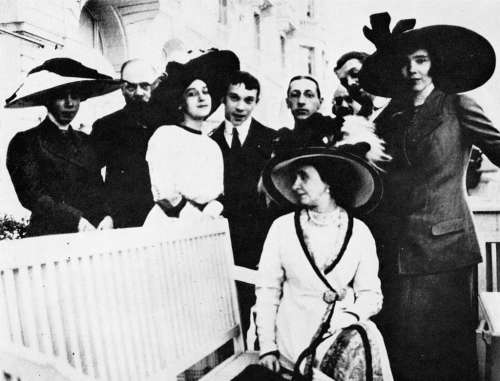
In April 1914, Stravinsky and his family returned to Clarens. Following the outbreak of World War I later that year, he was ineligible for military service due to health reasons. Stravinsky managed a short visit to Ustilug to retrieve personal items just before national borders were closed. In June 1915, he and his family moved from Clarens to Morges, a town six miles from Lausanne on the shore of Lake Geneva. The family lived there at three different addresses, until 1920. In December 1915, Stravinsky made his conducting debut at two concerts in aid of the Red Cross with The Firebird. The war and subsequent Russian Revolution in 1917 made it impossible for Stravinsky to return to his homeland.
Stravinsky began to struggle financially in the late 1910s as Russia and its successor, the USSR did not adhere to the Berne Convention, thus creating problems for Stravinsky to collect royalties for the performances of his pieces for the Ballets Russes. He blamed Diaghilev for his financial troubles, accusing the impresario of failing to adhere to their contract. While composing his theatrical piece L'Histoire du soldat The Soldier's Tale, Stravinsky approached Swiss philanthropist Werner Reinhart for financial assistance, who agreed to sponsor him and largely underwrite its first performance which took place in Lausanne in September 1918. In gratitude, Stravinsky dedicated the work to Reinhart and gave him the original manuscript. Reinhart supported Stravinsky further when he funded a series of concerts of his chamber music in 1919. In gratitude to his benefactor, Stravinsky also dedicated his Three Pieces for Clarinet to Reinhart, who was also an amateur clarinetist.
Following the premiere of Pulcinella by the Ballets Russes in Paris on 15 May 1920, Stravinsky returned to Switzerland.
Life in France, 1920–1939
In June 1920, Stravinsky and his family left Switzerland for France, first settling in Carantec, Brittany for the summer while they sought a permanent home in Paris. They soon heard from couturière Coco Chanel, who invited the family to live in her Paris mansion until they had found their own residence. The Stravinskys accepted and arrived in September. Chanel helped secure a guarantee for a revival production of The Rite of Spring by the Ballets Russes from December 1920 with an anonymous gift to Diaghilev that was claimed to be worth 300,000 francs.
In 1920, Stravinsky signed a contract with the French piano manufacturing company Pleyel. As part of the deal, Stravinsky transcribed most of his compositions for their player piano, the Pleyela. The company helped collect Stravinsky's mechanical royalties for his works and provided him with a monthly income. In 1921, he was given studio space at their Paris headquarters where he worked and entertained friends and acquaintances. The piano rolls were not recorded, but were instead marked up from a combination of manuscript fragments and handwritten notes by Jacques Larmanjat, musical director of Pleyel's roll department. During the 1920s, Stravinsky recorded Duo-Art piano rolls for the Aeolian Company in London and New York City, not all of which have survived.

Stravinsky met Vera de Bosset in Paris in February 1921, while she was married to the painter and stage designer Serge Sudeikin, and they began an affair that led to Vera leaving her husband.
In May 1921, Stravinsky and his family moved to Anglet, a town close to the Spanish border. Their stay was short-lived as by the autumn, they had settled to nearby Biarritz and Stravinsky completed his Trois mouvements de Petrouchka, a piano transcription of excerpts from Petrushka for Artur Rubinstein. Diaghilev then requested orchestrations for a revival production of Tchaikovsky's ballet The Sleeping Beauty. From then until his wife's death in 1939, Stravinsky led a double life, dividing his time between his family in Anglet, and Vera in Paris and on tour. Katya reportedly bore her husband's infidelity "with a mixture of magnanimity, bitterness, and compassion".
In June 1923, Stravinsky's ballet Les noces The Wedding premiered in Paris and performed by the Ballets Russes. In the following month, he started to receive money from an anonymous patron from the US who insisted to remain anonymous and only identified themselves as "Madame". They promised to send him $6,000 in the course of three years, and sent Stravinsky an initial cheque for $1,000. Despite some payments not being sent, Robert Craft believed that the patron was famed conductor Leopold Stokowski, whom Stravinsky had recently met, and theorised that the conductor wanted to win Stravinsky over to visit the US.
In September 1924, Stravinsky bought a new home in Nice. Here, the composer re-evaluated his religious beliefs and reconnected with his Christian faith with help from a Russian priest, Father Nicholas. He also thought of his future, and used the experience of conducting the premiere of his Octet at one of Serge Koussevitzky's concerts the year before to build on his career as a conductor. Koussevitzky asked for Stravinsky to compose a new piece for one of his upcoming concerts; Stravinsky agreed to a piano concerto, to which Koussevitzky convinced him that he be the soloist at its premiere. Stravinsky agreed, and the Concerto for Piano and Wind Instruments was first performed in May 1924. The piece was a success, and Stravinsky secured himself the rights to exclusively perform the work for the next five years. Following a European tour through the latter half of 1924, Stravinsky completed his first US tour in early 1925 which spanned two months.

In May 1927, Stravinsky's opera-oratorio Oedipus Rex premiered in Paris. The funding of its production was largely provided by Winnaretta Singer, Princesse Edmond de Polignac, who paid 12,000 francs for a private preview of the piece at her house. Stravinsky gave the money to Diaghilev to help finance the public performances. The premiere received a reaction, which irked Stravinsky, who had started to become annoyed at the public's fixation towards his early ballets. In the summer of 1927 Stravinsky received a commission from Elizabeth Sprague Coolidge, his first from the US. A wealthy patroness of music, Coolidge requested a thirty-minute ballet score for a festival to be held at the Library of Congress, for a $1,000 fee. Stravinsky accepted and wrote Apollo, which premiered in 1928.
From 1931 to 1933, the Stravinskys lived in Voreppe, near Grenoble, southeastern France. The Stravinskys became French citizens in 1934 and moved to the rue du Faubourg Saint-Honoré in Paris. Stravinsky later remembered this last European address as his unhappiest, as his wife's tuberculosis infected both himself and his eldest daughter Ludmila, who died in 1938. Katya, to whom he had been married for 33 years, died of tuberculosis three months later, in March 1939. Stravinsky himself spent five months in hospital, during which time his mother died.
During his later years in Paris, Stravinsky had developed professional relationships with key people in the United States: he was already working on his Symphony in C for the Chicago Symphony Orchestra and he had agreed to deliver the prestigious Charles Eliot Norton Lectures at Harvard University during the 1939–40 academic year.
Life in the United States, 1939–1971
1939–1945
On 30 September 1939, Stravinsky arrived in New York City and travelled onward to Cambridge, Massachusetts to fulfil his engagement at Harvard. For the first two months in the US, he stayed at Gerry's Landing, the home of art historian Edward W. Forbes. Vera arrived in New York City in January 1940, after which the couple married in Bedford, Massachusetts on 9 March. They moved into a home in Beverly Hills, California before settling in Hollywood from 1941. The composer had decided that the warm Californian climate would benefit his health.
Stravinsky had adapted to life in France, but moving to America at the age of 57 was a very different prospect. For a while, he maintained a circle of contacts and émigré friends from Russia, but he eventually found that this did not sustain his intellectual and professional life. He was drawn to the growing cultural life of Los Angeles, especially during World War II, when so many writers, musicians, composers and conductors settled in the area: these included Otto Klemperer, Thomas Mann, Franz Werfel, George Balanchine and Arthur Rubinstein. Bernard Holland claimed Stravinsky was especially fond of British writers, who visited him in Beverly Hills, "like W. H. Auden, Christopher Isherwood, Dylan Thomas. They shared the composer's taste for hard spirits – especially Aldous Huxley, with whom Stravinsky spoke in French." Stravinsky and Huxley had a tradition of Saturday lunches for west coast avant-garde and luminaries.
Stravinsky's unconventional dominant seventh chord in his arrangement of the "Star-Spangled Banner" led to an incident with the Boston police on 15 January 1944, and he was warned that the authorities could impose a $100 fine upon any "re-arrangement of the national anthem in whole or in part". The police, as it turned out, were wrong. The law in question merely forbade using the national anthem "as dance music, as an exit march, or as a part of a medley of any kind", but the incident soon established itself as a myth, in which Stravinsky was supposedly arrested, held in custody for several nights, and photographed for police records.
Stravinsky's professional life encompassed most of the 20th century, including many of its modern classical music styles, and he influenced composers both during and after his lifetime. Included among his students in the 1940s was the American composer and music educator Robert Strassburg. In 1959, he was awarded the Sonning Award, Denmark's highest musical honour. In the early 1960s his students included Robert Craft and Warren Zevon.
On 28 December 1945, Stravinsky and his wife Vera became naturalized US citizens. Their sponsor and witness was actor Edward G. Robinson.
1945–1968
On the same day Stravinsky became an American citizen, he arranged for Boosey & Hawkes to publish rearrangements of several of his compositions and used his newly acquired American citizenship to secure a copyright on the material, thus allowing him to earn money from them. The five-year contract was finalised and signed in January 1947 which included a guarantee of $10,000 per for the first two years, then $12,000 for the remaining three.
In late 1945, Stravinsky received a commission from Europe, his first since Perséphone, in the form of a string piece for the 20th anniversary for Paul Sacher's Basle Chamber Orchestra. The Concerto in D premiered in 1947. In January 1946, Stravinsky conducted the premiere of his Symphony in Three Movements at Carnegie Hall in New York City. It marked his first premiere in the US. In 1947, Stravinsky was inspired to write his English-language opera The Rake's Progress by a visit to a Chicago exhibition of the same-titled series of paintings by the eighteenth-century British artist William Hogarth, which tells the story of a fashionable wastrel descending into ruin. American poet W. H. Auden and writer Chester Kallman worked on the libretto. The opera premiered in 1951 and marks the final work during Stravinsky's neoclassical period.
Stravinsky befriended American conductor Robert Craft while composing The Rake's Progress. Craft later became Stravinsky's personal assistant and close friend, and encouraged him to compose serial music. This began Stravinsky's third and final distinct musical period, the serial or twelve-tone period, which lasted until his death.
In January 1962, during his tour's stop in Washington, D.C., Stravinsky attended a dinner at the White House with President John F. Kennedy in honour of his eightieth birthday, where he received a special medal for "the recognition his music has achieved throughout the world". In September 1962, Stravinsky returned to Russia for the first time since 1914, accepting an invitation from the Union of Soviet Composers to conduct six performances in Moscow and Leningrad. During the three-week visit he met with Soviet Premier Nikita Khrushchev and several leading Soviet composers, including Dmitri Shostakovich and Aram Khachaturian. Stravinsky did not return to his Hollywood home until December 1962 in what was almost eight months of continual travelling. Following the assassination of President John F. Kennedy in 1963, Stravinsky completed his Elegy for J.F.K. in the following year. The two-minute work took the composer two days to write.

By early 1964, the long periods of travel had started to affect Stravinsky's health. His case of polycythemia had worsened and his friends had noticed that his movements and speech had slowed. In 1965, Stravinsky agreed to have David Oppenheim produce a documentary film about himself for the CBS network. It involved a film crew following the composer at home and on tour that year, and he was paid $10,000 for the production. The documentary includes Stravinsky's visit to Les Tilleuls, the house in Clarens, Switzerland, where he wrote the majority of The Rite of Spring. The crew asked Soviet authorities for permission to film Stravinsky returning to his hometown of Ustilug, but the request was denied. In 1966, Stravinsky completed his last major work, the Requiem Canticles.
In February 1967, Stravinsky and Craft directed their own concert in Miami, Florida, the composer's first in that state. By this time, Stravinsky's typical performance fee had burgeoned to $10,000. However subsequently, upon doctor's orders, offers to perform that required him to fly were generally declined. An exception to this was a concert at Massey Hall in Toronto, Canada in May 1967, where he conducted the relatively physically undemanding Pulcinella suite with the Toronto Symphony Orchestra. He had become increasingly frail and for the only time in his career, Stravinsky conducted while sitting down. It was his final performance as conductor in his lifetime. While backstage at the venue, Stravinsky informed Craft that he believed he had suffered a stroke. In August 1967, Stravinsky was hospitalised in Hollywood for bleeding stomach ulcers and thrombosis which required a blood transfusion. In his diary, Craft wrote that he spoon-fed the ailing composer and held his hand: "He says the warmth diminishes the pain."
By 1968, Stravinsky had recovered enough to resume touring across the US with him in the audience while Craft took to the conductor's post for the majority of the concerts. In May 1968, Stravinsky completed the piano arrangement of two songs by Austrian composer Hugo Wolf for a small orchestra. In October Stravinsky, Vera, and Craft travelled to Zurich, Switzerland to sort out business matters with Stravinsky's family. While there, Stravinsky's son Theodore held the manuscript of The Rite of Spring while Stravinsky signed it before giving it to Vera. The three considered relocating to Switzerland as they had become increasingly less fond of Hollywood, but they decided against it and returned to the US.
Final years and death
In October 1969, after close to three decades in California and being denied to travel overseas by his doctors due to ill health, Stravinsky and Vera secured a two-year lease for a luxury three bedroom apartment in Essex House in New York City. Craft moved in with them, effectively putting his career on hold to care for the ailing composer. Among Stravinsky's final projects was orchestrating two preludes from The Well-Tempered Clavier by Bach, but it was never completed. He was hospitalised in April 1970 following a bout of pneumonia, which he successfully recovered from. Two months later, he travelled to Évian-les-Bains by Lake Geneva where he reunited with his eldest son Theodore and niece Xenia.

On 18 March 1971, Stravinsky was taken to Lenox Hill Hospital with pulmonary edema where he stayed for ten days. On 29 March, he moved into a newly furbished apartment at 920 Fifth Avenue, his first city apartment since living in Paris in 1939. After a period of well being, the edema returned on 4 April and Vera insisted that medical equipment should be installed in the apartment. Stravinsky soon stopped eating and drinking and died at 5:20 a.m. on 6 April at the age of 88. The cause on his death certificate is heart failure. A funeral service was held three days later at Frank E. Campbell Funeral Chapel. As per his wishes, he was buried in the Russian corner of the cemetery island of San Michele in northern Italy, several yards from the tomb of Sergei Diaghilev.
He has a star on the Hollywood Walk of Fame, and in 1987 he was posthumously awarded the Grammy Award for Lifetime Achievement. He was posthumously inducted into the National Museum of Dance and Hall of Fame in 2004.
Music
Stravinsky's output is typically divided into three general style periods: a Russian period, a neoclassical period, and a serial period.
Russian period c. 1907–1919
Aside from a very few surviving earlier works, Stravinsky's Russian period, sometimes called primitive period, began with compositions undertaken under the tutelage of Nikolai Rimsky-Korsakov, with whom he studied from 1905 until Rimsky's death in 1908, including the orchestral works Symphony in E♭ major 1907, Faun and Shepherdess for mezzo-soprano and orchestra; 1907, Scherzo fantastique 1908, and Feu d'artifice 1908/9. These works clearly reveal the influence of Rimsky-Korsakov, but as Richard Taruskin has shown, they also reveal Stravinsky's knowledge of music by Glazunov, Taneyev, Tchaikovsky, Wagner, Dvořák, and Debussy, among others.
In 1908, Stravinsky composed Funeral Song, Op. 5 to commemorate the death of Nikolai Rimsky-Korsakov. The piece premiered 17 January 1909 in the Grand Hall of the Saint Petersburg Conservatory but was then lost until September 2015, when it resurfaced in a back room of the city's Conservatoire. It was played again for the first time in over a century on 2 December 2016. The rediscovery generated much enthusiasm and, as a result, over 25 performances are scheduled in 2017 and beyond.

Performances in St. Petersburg of Scherzo fantastique and Feu d'artifice attracted the attention of Serge Diaghilev, who commissioned Stravinsky to orchestrate two piano works of Chopin for the ballet Les Sylphides to be presented in the 1909 debut "Saison Russe" of his new ballet company.
The Firebird was first performed at the Paris Opéra on 25 June 1910 by Diaghilev's Ballets Russes. Like Stravinsky's earlier student works, The Firebird continued to look backward to Rimsky-Korsakov not only in its orchestration, but also in its overall structure, harmonic organization, and melodic content.
According to Taruskin, Stravinsky's second ballet for the Ballet Russes, Petrushka, is where "Stravinsky at last became Stravinsky."
The music itself makes significant use of a number of Russian folk tunes in addition to two waltzes by Viennese composer Joseph Lanner and a French music hall tune La Jambe en bois or The Wooden Leg.
In April 1915, Stravinsky received a commission from Winnaretta Singer Princesse Edmond de Polignac for a small-scale theatrical work to be performed in her Paris salon. The result was Renard 1916, which he called "A burlesque in song and dance".
Neoclassical period c. 1920–1954
Apollon musagète 1928, Perséphone 1933 and Orpheus 1947 exemplify not only Stravinsky's return to the music of the Classical period but also his exploration of themes from the ancient Classical world, such as Greek mythology. Important works in this period include the Octet 1923, the Concerto for Piano and Winds 1924, the Serenade in A 1925, and Symphony of Psalms 1930.

In 1951, he completed his last neoclassical work, the opera The Rake's Progress to a libretto by W. H. Auden and Chester Kallman based on the etchings of William Hogarth. It premiered in Venice that year and was produced around Europe the following year before being staged in the New York Metropolitan Opera in 1953. It was staged by the Santa Fe Opera in a 1962 Stravinsky Festival in honor of the composer's 80th birthday and was revived by the Metropolitan Opera in 1997.
Serial period 1954–1968
In the 1950s, Stravinsky began using serial compositional techniques such as dodecaphony, the twelve-tone technique originally devised by Arnold Schoenberg. He first experimented with non-twelve-tone serial techniques in small-scale vocal and chamber works such as the Cantata 1952, the Septet 1953 and Three Songs from Shakespeare 1953. The first of his compositions fully based on such techniques was In Memoriam Dylan Thomas 1954. Agon 1954–57 was the first of his works to include a twelve-tone series and Canticum Sacrum 1955 was the first piece to contain a movement entirely based on a tone row. Stravinsky expanded his use of dodecaphony in works such as Threni 1958 and A Sermon, a Narrative and a Prayer 1961, which are based on biblical texts, and The Flood 1962, which mixes brief biblical texts from the Book of Genesis with passages from the York and Chester Mystery Plays.
Innovation and influence
Stravinsky has been called "one of music's truly epochal innovators". The most important aspect of Stravinsky's work, aside from his technical innovations including in rhythm and harmony, is the "changing face" of his compositional style while always "retaining a distinctive, essential identity".
Stravinsky's use of motivic development the use of musical figures that are repeated in different guises throughout a composition or section of a composition included additive motivic development. This is a technique in which notes are removed from or added to a motif without regard to the consequent changes in metre. A similar technique can be found as early as the 16th century, for example in the music of Cipriano de Rore, Orlandus Lassus, Carlo Gesualdo and Giovanni de Macque, music with which Stravinsky exhibited considerable familiarity.
The Rite of Spring is notable for its relentless use of ostinati, for example in the eighth-note ostinato on strings accented by eight horns in the section "Augurs of Spring Dances of the Young Girls". The work also contains passages where several ostinati clash against one another. Stravinsky was noted for his distinctive use of rhythm, especially in the Rite of Spring 1913. According to the composer Philip Glass, "the idea of pushing the rhythms across the bar lines . The rhythmic structure of music became much more fluid and in a certain way spontaneous." Glass mentions Stravinsky's "primitive, offbeat rhythmic drive". According to Andrew J. Browne, "Stravinsky is perhaps the only composer who has raised rhythm in itself to the dignity of art." Stravinsky's rhythm and vitality greatly influenced the composer Aaron Copland.

Over the course of his career, Stravinsky called for a wide variety of orchestral, instrumental, and vocal forces, ranging from single instruments in such works as Three Pieces for Clarinet 1918 or Elegy for Solo Viola 1944 to the enormous orchestra of The Rite of Spring 1913, which Aaron Copland characterized as "the foremost orchestral achievement of the 20th century".
Stravinsky’s creation of unique and idiosyncratic ensembles arising from the specific musical nature of individual works is a basic element of his style.
Following the model of his teacher, Nikolai Rimsky-Korsakov, Stravinsky’s student works such as the Symphony in E♭, Op. 1 1907, Scherzo fantastique, Op. 3 1908, and Fireworks Feu d'artifice, Op. 4 1908, call for large orchestral forces. The Symphony, for example, calls for 3 flutes 3rd doubles piccolo, 2 oboes, 3 clarinets in B♭, 2 bassoons, 4 horns in F, 3 trumpets in B♭, 3 trombones, tuba, timpani, bass drum, triangle, cymbals, and strings. The Scherzo fantastique calls for a slightly larger orchestra but completely omits trombones: this was Stravinsky’s response to Rimsky’s criticism of their overuse in the Symphony.
The three ballets composed for Diaghilev's Ballets Russes call for particularly large orchestras:
- The Firebird 1910 is scored for the following orchestra: 2 piccolos 2nd doubles 3rd flute, 2 flutes, 3 oboes, cor anglais, 3 clarinets in A 3rd doubles piccolo clarinet in D, bass clarinet, 3 bassoons 3rd doubles contrabassoon 2, contrabassoon, 4 horns, 3 trumpets in A, 3 trombones, tuba, timpani, percussion, celesta, piano, 3 harps, and strings. The percussion section requires bass drum, cymbals, triangle, tambourine, tam-tam, tubular bells, glockenspiel, and xylophone. In addition, the original version calls for 3 onstage trumpets and 4 onstage Wagner tubas 2 tenor and 2 bass.
- The original version of Petrushka 1911 calls for a similar orchestra without onstage brass, but with the addition of onstage snare drum. The particularly prominent role of the piano is the result of the music's origin as a Konzertstück for piano and orchestra.
- The Rite of Spring 1913 calls for the largest orchestra Stravinsky ever employed: piccolo, 3 flutes 3rd doubles 2nd piccolo, alto flute, 4 oboes 4th doubles 2nd cor anglais, cor anglais, piccolo clarinet in D/E♭, 3 clarinets 3rd doubles 2nd bass clarinet, bass clarinet, 4 bassoons 4th doubles 2nd contrabassoon, contrabassoon, 8 horns 7th and 8th double tenor tubas, piccolo trumpet in D, 4 trumpets in C 4th doubles bass trumpet in E♭, 3 trombones, 2 tubas, 2 timpanists 5 drums, 4 percussionists, and strings. The percussion section requires bass drum, tamtam, triangle, tambourine, cymbals, crotales, and guiro.
Personality
Stravinsky displayed a taste in literature that was wide and reflected his constant desire for new discoveries. The texts and literary sources for his work began with a period of interest in Russian folklore, which progressed to classical authors and the Latin liturgy and moved on to contemporary France André Gide, in Persephone and eventually English literature, including W. H. Auden, T. S. Eliot, and medieval English verse.
He also had an inexhaustible desire to explore and learn about art, which manifested itself in several of his Paris collaborations. Not only was he the principal composer for Diaghilev's Ballets Russes, but he also collaborated with Pablo Picasso Pulcinella, 1920, Jean Cocteau Oedipus Rex, 1927, and George Balanchine Apollon musagète, 1928. His interest in art propelled him to develop a strong relationship with Picasso, whom he met in 1917, announcing that in "a whirlpool of artistic enthusiasm and excitement I at last met Picasso."

The young Stravinsky was sympathetic to bourgeois liberalism and the aims of the Constitutional Democratic Party, even composing an anthem for the Russian Provisional Government, before shifting heavily towards the right following the October Revolution. In 1930, he remarked, "I don't believe that anyone venerates Mussolini more than I ... I know many exalted personages, and my artist's mind does not shrink from political and social issues. Well, after having seen so many events and so many more or less representative men, I have an overpowering urge to render homage to your Duce. He is the saviour of Italy and – let us hope – Europe." Later, after a private audience with Mussolini, he added, "Unless my ears deceive me, the voice of Rome is the voice of Il Duce. I told him that I felt like a fascist myself... In spite of being extremely busy, Mussolini did me the great honour of conversing with me for three-quarters of an hour. We talked about music, art and politics". When the Nazis placed Stravinsky's works on the list of "Entartete Musik", he lodged a formal appeal to establish his Russian genealogy and declared, "I loathe all communism, Marxism, the execrable Soviet monster, and also all liberalism, democratism, atheism, etc."
Upon relocating to America in the 1940s, Stravinsky again embraced the liberalism of his youth, remarking that Europeans "can have their generalissimos and Führers. Leave me Mr. Truman and I'm satisfied." Towards the end of his life, at Craft's behest, Stravinsky made a return visit to his native country and composed a cantata in Hebrew, travelling to Israel for its performance.

Stravinsky proved adept at playing the part of a 'man of the world', acquiring a keen instinct for business matters and appearing relaxed and comfortable in public. His successful career as a pianist and conductor took him to many of the world's major cities, including Paris, Venice, Berlin, London, Amsterdam and New York and he was known for his polite, courteous and helpful manner. Stravinsky was reputed to have been a philanderer and was rumoured to have had affairs with high-profile partners, such as Coco Chanel. He never referred to it himself, but Chanel spoke about the alleged affair at length to her biographer Paul Morand in 1946; the conversation was published thirty years later. The accuracy of Chanel's claims has been disputed by both Stravinsky's widow, Vera, and by Craft. Chanel's fashion house avers there is no evidence that any affair between Chanel and Stravinsky ever occurred. A fictionalization of the supposed affair formed the basis of the novel Coco and Igor 2002 and a film, Coco Chanel & Igor Stravinsky 2009. Despite these alleged liaisons, Stravinsky was considered a family man and devoted to his children.
Religion
Stravinsky was a devout member of the Russian Orthodox Church during most of his life, remarking at one time that, "Music praises God. Music is well or better able to praise him than the building of the church and all its decoration; it is the Church's greatest ornament."
As a child, he was brought up by his parents in the Russian Orthodox Church. Baptized at birth, he later rebelled against the Church and abandoned it by the time he was fourteen or fifteen years old. Throughout the rise of his career he was estranged from Christianity and it was not until he reached his early forties that he experienced a spiritual crisis. After befriending a Russian Orthodox priest, Father Nicholas, after his move to Nice in 1924, he reconnected with his faith. He rejoined the Russian Orthodox Church and afterwards remained a committed Christian. Robert Craft noted that Stravinsky prayed daily, before and after composing, and also prayed when facing difficulty. Towards the end of his life, he was no longer able to attend church services. In his late seventies, Stravinsky said:
I cannot now evaluate the events that, at the end of those thirty years, made me discover the necessity of religious belief. I was not reasoned into my disposition. Though I admire the structured thought of theology (Anselm's proof in the Fides Quaerens Intellectum, for instance) it is to religion no more than counterpoint exercises are to music. I do not believe in bridges of reason or, indeed, in any form of extrapolation in religious matters. ... I can say, however, that for some years before my actual "conversion", a mood of acceptance had been cultivated in me by a reading of the Gospels and by other religious literature.
Reception
If Stravinsky's stated intention was "to send them all to hell", then he may have regarded the 1913 premiere of The Rite of Spring as a success: it resulted in one of history's most famous classical music riots, and Stravinsky referred to it on several occasions in his autobiography as a scandale. There were reports of fistfights in the audience and the need for a police presence during the second act. The real extent of the tumult is open to debate and the reports may be apocryphal.

In 1998, Time magazine named Stravinsky as one of the 100 most influential people of the century. In addition to the recognition he received for his compositions, he achieved fame as a pianist and a conductor, often at the premieres of his works. In 1923, Erik Satie wrote an article about Igor Stravinsky in Vanity Fair. Satie had met Stravinsky for the first time in 1910. In the published article, Satie argued that measuring the "greatness" of an artist by comparing him to other artists, as if speaking about some "truth", is illusory and that every piece of music should be judged on its own merits and not by comparing it to the standards of other composers. That was exactly what Jean Cocteau did when he commented deprecatingly on Stravinsky in his 1918 book, Le Coq et l'Arlequin.
According to The Musical Times in 1923:
All the signs indicate a strong reaction against the nightmare of noise and eccentricity that was one of the legacies of the war.... What (for example) has become of the works that made up the program of the Stravinsky concert which created such a stir a few years ago? Practically the whole lot are already on the shelf, and they will remain there until a few jaded neurotics once more feel a desire to eat ashes and fill their belly with the east wind.
In 1935, the American composer Marc Blitzstein compared Stravinsky to Jacopo Peri and C.P.E. Bach, conceding that, "there is no denying the greatness of Stravinsky. It is just that he is not great enough." Blitzstein's Marxist position was that Stravinsky's wish to "divorce music from other streams of life", which is "symptomatic of an escape from reality", resulted in a "loss of stamina", naming specifically Apollo, the Capriccio, and Le Baiser de la fée.
The composer Constant Lambert described pieces such as L'Histoire du soldat as containing "essentially cold-blooded abstraction". Lambert continued, "melodic fragments in Histoire du Soldat are completely meaningless themselves. They are merely successions of notes that can conveniently be divided into groups of three, five, and seven and set against other mathematical groups" and he described the cadenza for solo drums as "musical purity ... achieved by a species of musical castration". He compared Stravinsky's choice of "the drabbest and least significant phrases" to Gertrude Stein's 'Everyday they were gay there, they were regularly gay there everyday' "Helen Furr and Georgine Skeene", 1922, "whose effect would be equally appreciated by someone with no knowledge of English whatsoever".
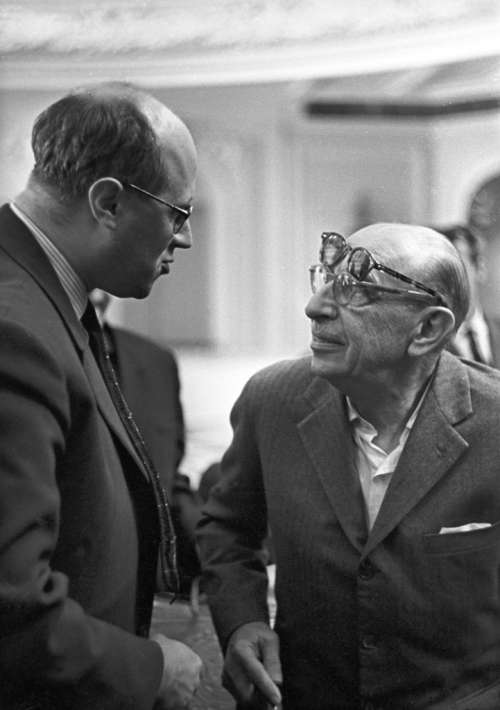
In his 1949 book Philosophy of Modern Music, Theodor W. Adorno described Stravinsky as an acrobat and spoke of hebephrenic and psychotic traits in several of Stravinsky's works. Contrary to a common misconception, Adorno didn't believe the hebephrenic and psychotic imitations that the music was supposed to contain were its main fault, as he pointed out in a postscript that he added later to his book. Adorno's criticism of Stravinsky is more concerned with the "transition to positivity" Adorno found in his neoclassical works. Part of the composer's error, in Adorno's view, was his neoclassicism, but of greater importance was his music's "pseudomorphism of painting", playing off le temps espace time-space rather than le temps durée time-duration of Henri Bergson. According to Adorno, "one trick characterizes all of Stravinsky's formal endeavors: the effort of his music to portray time as in a circus tableau and to present time complexes as though they were spatial. This trick, however, soon exhausts itself." Adorno maintained that the "rhythmic procedures closely resemble the schema of catatonic conditions. In certain schizophrenics, the process by which the motor apparatus becomes independent leads to infinite repetition of gestures or words, following the decay of the ego."
Stravinsky's reputation in Russia and the USSR rose and fell. Performances of his music were banned from around 1933 until 1962, the year Nikita Khrushchev invited him to the USSR for an official state visit. In 1972, an official proclamation by the Soviet Minister of Culture, Yekaterina Furtseva, ordered Soviet musicians to "study and admire" Stravinsky's music and she made hostility toward it a potential offence. While Stravinsky's music has been criticized for its range of styles, scholars had "gradually begun to perceive unifying elements in Stravinsky's music" by the 1980s. Earlier writers, such as Aaron Copland, Elliott Carter, and Boris de Schloezer held somewhat unfavorable views of Stravinsky's works, and Virgil Thomson, writing in Modern Music a quarterly review published between 1925 and 1946, could find only a common "'seriousness' of 'tone' or of 'purpose', 'the exact correlation between the goal and the means', or a dry 'ant-like neatness'".
Honours
In 1910, Florent Schmitt dedicated the revised version of his ballet La tragédie de Salomé, Op. 50, to Stravinsky.
In 1915, Claude Debussy dedicated the third movement of his En blanc et noir for two pianos to Stravinsky.
In 1982, Stravinsky was featured on a 2¢ postage stamp by the United States Postal Service as part of its Great Americans stamp series.
Awards
- 1954: Royal Philharmonic Society Gold Medal
- 1959: Léonie Sonning Music Prize
- 1963: Wihuri Sibelius Prize
- Grammy Awards 1962: Best Classical Composition by Contemporary Composer The Flood 1962: Best Classical Performance – Orchestra The Firebird, Igor Stravinsky conducting Columbia Symphony Orchestra 1962: Best Classical Performance – Instrumental Soloist with orchestra Violin Concerto in D, Isaac Stern; Igor Stravinsky conducting Columbia Symphony Orchestra 1987: Lifetime Achievement posthumous
- 1962: Best Classical Composition by Contemporary Composer The Flood
- 1962: Best Classical Performance – Orchestra The Firebird, Igor Stravinsky conducting Columbia Symphony Orchestra
- 1962: Best Classical Performance – Instrumental Soloist with orchestra Violin Concerto in D, Isaac Stern; Igor Stravinsky conducting Columbia Symphony Orchestra
- 1987: Lifetime Achievement posthumous
Orders
- Commander of the Order of Saint James of the Sword, Portugal 25 July 1966
Recordings and publications
Igor Stravinsky found recordings a practical and useful tool in preserving his thoughts on the interpretation of his music. As a conductor of his own music, he recorded primarily for Columbia Records, beginning in 1928 with a performance of the original suite from The Firebird and concluding in 1967 with the 1945 suite from the same ballet. In the late 1940s he made several recordings for RCA Victor at the Republic Studios in Los Angeles. Although most of his recordings were made with studio musicians, he also worked with the Chicago Symphony Orchestra, the Cleveland Orchestra, the CBC Symphony Orchestra, the New York Philharmonic Orchestra, the Royal Philharmonic Orchestra and the Bavarian Broadcasting Symphony Orchestra.
During his lifetime, Stravinsky appeared on several telecasts, including the 1962 world premiere of The Flood on CBS Television. Although he made an appearance, the actual performance was conducted by Robert Craft. Numerous films and videos of the composer have been preserved.
Stravinsky published a number of books throughout his career, almost always with the aid of a sometimes uncredited collaborator. In his 1936 autobiography, Chronicle of My Life, which was written with the help of Walter Nouvel, Stravinsky included his well-known statement that "music is, by its very nature, essentially powerless to express anything at all." With Alexis Roland-Manuel and Pierre Souvtchinsky, he wrote his 1939–40 Harvard University Charles Eliot Norton Lectures, which were delivered in French and first collected under the title Poétique musicale in 1942 and then translated in 1947 as Poetics of Music. In 1959, several interviews between the composer and Robert Craft were published as Conversations with Igor Stravinsky, which was followed by a further five volumes over the following decade. A collection of Stravinsky's writings and interviews appears under the title Confidences sur la musique Actes Sud, 2013.
More facts
Soulima Stravinsky
Maria Milena Stravinsky
Fyodor Stravinsky
Ludmila Mandelstam

